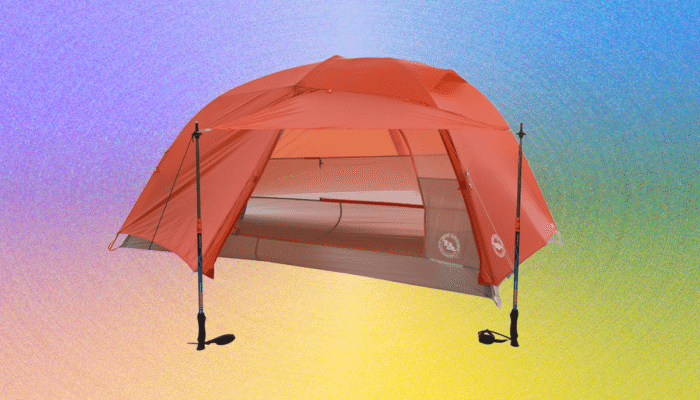US carriers often shake up their mobile plans and offers to entice customers to switch and upgrade. Verizon’s latest big idea? A three-year price lock. New and existing subscribers can lock in their mobile or home internet plan pricing for three years—and even get a new smartphone.
Verizon says this will be automatic for both myPlan and myHome network plans. If you change your myPlan tier, the price lock resets for another three years. For the free phone offer, you’ll need to trade in any Apple, Google, or Samsung phone in any condition. The carrier also says home internet routers are included with no extra cost in every myHome plan. If you have a qualifying device, you can use Verizon’s free satellite texting feature (in an area with no cell service).
The company says the promotion offers “predictability, control, simplicity, and value that is particularly relevant in today’s economic environment.” It was announced a day after President Trump announced tariffs that will have broad impacts across the tech industry.
However, like all carrier promotions, there’s a catch. In the fine print, Verizon notes: “Plan perks, taxes, fees, and surcharges are subject to change.” While your mobile phone plan or home internet plan’s base rate will not change, Verizon could levy fees that could still raise your bill. You also need to be on Verizon’s myPlan, which the company introduced in 2023.
Withings’ Blood Pressure Monitor Goes on Sale
One of the most common tests at the doctor’s office is to measure your blood pressure to check for hypertension, yet no wearable fitness trackers offer this basic functionality. (Most of them can give you an electrocardiogram and check your blood oxygen levels.) Earlier this year, Withings began offering Cardio Checkup, an in-app service to send your cardiac data quarterly to a team of specialists for review. Now, Withings is releasing its at-home blood pressure monitor in the US. The BPM Vision is FDA-cleared and has an educational tutorial to show you how to use it. It syncs to the Withings app and has interchangeable cuffs for a wide range of adult users.
When I reported on the rise of blood pressure monitoring devices earlier this year, I spoke to some business leaders who noted that quantified selfers and men in their thirties, forties, and fifties were the demographic most interested in monitoring their blood pressure. A higher percentage of men than women have high blood pressure, otherwise known as hypertension, but nearly half of all adults in the US have high blood pressure. Untreated, it can drastically increase the risk of heart disease, stroke, or other costly illnesses. If a simple $150 at-home device can help cut down the estimated $131 billion in costs to treat hypertension, sign me up. It’s available directly from Withings. —Adrienne So
Rolex and TAG Heuer Duke It Out in This Week’s Watch Release War
This week at Watches & Wonders in Geneva, the watch world gathered to show off all its new releases for 2025 (well, all except Audemars Piguet, Richard Mille, Breitling and the Swatch Group, which includes Omega, none of whom like to play in this particular horological sandpit)—and while there were many innovations on display, the two new models that sucked up the most publicity oxygen were undoubtedly TAG’s Formula 1 Solargraph collection and a brand new Rolex, the Land-Dweller.
You can read our exclusive feature all about how TAG revived the iconic F1 watch here, but the highlights are as follows: Nearly 40 years after the wildly successful and accessible color-popping line made its debut, it’s now returning in solar-powered form. So, running on nothing other than light it can tick on for up to ten months on a full charge. Made from sand-blasted steel, DLC-treated steel, or TH-Polylight plastic, the other undeniably wise update is that the case size has bumped up from 35 mm to 38 mm, and the price is from $1,800. Like the color-strap versions? Move fast, as these are limited-edition.
Any completely brand-new watch from Rolex is “a big deal,” so I’m sure you can imagine the hoo-ha created when the Land-Dweller dropped on Monday. Evoking 1976’s Datejust Oysterquartz, this piece has apparently been 10 years in development, powered by the calibre 7135, which is Rolex’s first-ever mechanical high-frequency movement, running at 5 Hz thanks to an escapement primarily from silicon that delivers energy via rolling rather than sliding. At 9.7 mm thick, the watch comes in 36 mm and 40 mm flavors, as well as in steel with a white gold bezel, Everose gold, and platinum. Prices start at $13,900. —Jeremy White
Photograph: Rolex
Samsung’s New Galaxy Tablets and Vented Washer-Dryer
Hot on the heels of the new iPad and iPad Air, Samsung’s answer is the Galaxy Tab S10 FE ($500) and Tab S10 FE+ ($650), the lower-cost models in the Tab S10 family that debuted last year. They’ve gotten a price hike over their predecessor, though the screen on the plus model is larger than ever at 13.1 inches. The standard FE has a 10.9-inch LCD, and both have a 90-Hz refresh rate. They’re powered by Samsung’s Exynos 1580, a mid-tier chip that will drive the upcoming Galaxy A56. Not much else is drastically new here—these Android tablets support many of Samsung’s artificial intelligence features that debuted in the Galaxy S25 series, and they still come with a stylus in the box. They go on sale starting April 10 in the US.
Samsung’s news this week didn’t stop there. It also unveiled a bevy of new Bespoke smart appliances, from a stick vacuum that can alert you if you’re getting a phone call, to a new four-door refrigerator with a compact 9-inch “AI Home” screen. But what caught my attention was the new Bespoke AI Laundry Vented Combo. This two-in-one washer and dryer is a follow-up to last year’s ventless model, but the vented model purportedly improves performance, with the capability to wash and dry a load of laundry in just 68 minutes. Samsung claims it’s the “industry’s first vented all-in-one washer-dryer in its class.” Most American homes use vented dryers, so these may be more appealing to folks with a ventilation system already, especially with the improved performance. Samsung thinks you might even buy two, in case you want to get two full loads of laundry done at the same time. It’s available now for $2,499.
Photograph: Samsung
Ooni Debuts Bigger, Better Gas Pizza Ovens
It is not hyperbole to say that pizza oven manufacturer Ooni (formerly known as Uuni) revolutionized the market of portable, relatively affordable backyard pizza ovens when the company started in 2012. Now it’s banking on that success with two new ovens extending its gas-powered, beginner-friendly Koda range. The Koda 2 can reach temperatures as high as 950 degrees Fahrenheit (510 C), with a larger 14-inch cooking area and Ooni’s new G2 gas distribution technology. Most high-heat ovens have a single heat source at the back, but Ooni’s flame is bigger at the mouth of the oven so that the pizza stone heats evenly.
The Koda 2 Pro is the same oven but with an 18-inch cooking space. Both are also now available in a new Slate Blue color, which I’ve never seen on any Ooni oven. The two join last year’s Koda 2 Max ($1,199), which has a 20-inch cooking space. (Having tested the Koda 2 Max, I will say: Be prepared to use a lot of gas and to feel the heat raging out of that thing.) The Koda 2 is currently available for $449, and the Koda 2 Pro will be available on May 1 for $749. —Adrienne So
Photograph: Ooni
A Smaller Flat-Top Grill From Traeger
Traeger just announced a new stand-up Flatrock 2-Zone Flat Top Grill this week, the second big griddle for the brand best known for inventing the pellet-smoker, back when the company was still owned by a guy named Traeger in Oregon. Traeger has expanded its line considerably under big-money ownership in recent decades, and it now pushes branded meat thermometers for tech-forward, app-regulated smokers the WIRED Gear team has reviewed quite fondly. The newest push is big outdoor propane-fueled griddles that mimic the flattop at your favorite diner, which have become fashionable among the backyard smashburger or fajita set.
Photograph: Traeger
Until now, the only option was huge. Two years ago, Traeger introduced the $900, 3-Zone Flatrock Flat-Top Grill with a nearly 600-square-inch surface that could cook 24 burgers or 26 eggs at a time—a whole lot of griddle and a whole lot of money. But if such a meat margin appears a tad daunting, the new 2-Zone is a more modest version of griddle-out.
Designed for smaller patios, it offers the usual fan-out prep trays on each side, with two U-shaped burners beneath its broad flat surface to maintain even temperature. The griddle’s inlay design helps block wind, Traeger claims, while grease funnels into a removable container. The 2-Zone is a little smaller, a 26-inch by 18-inch cooktop offering a mere 18-burger capacity. So enough for the basketball team, but not quite the football team. For that, it’s also $200 less. —Matthew Korfhage




